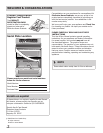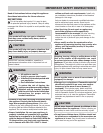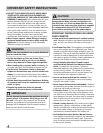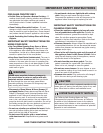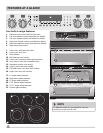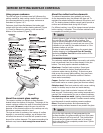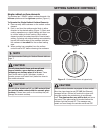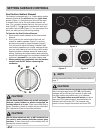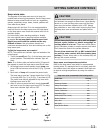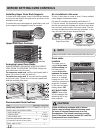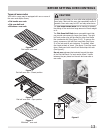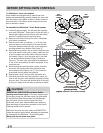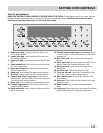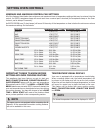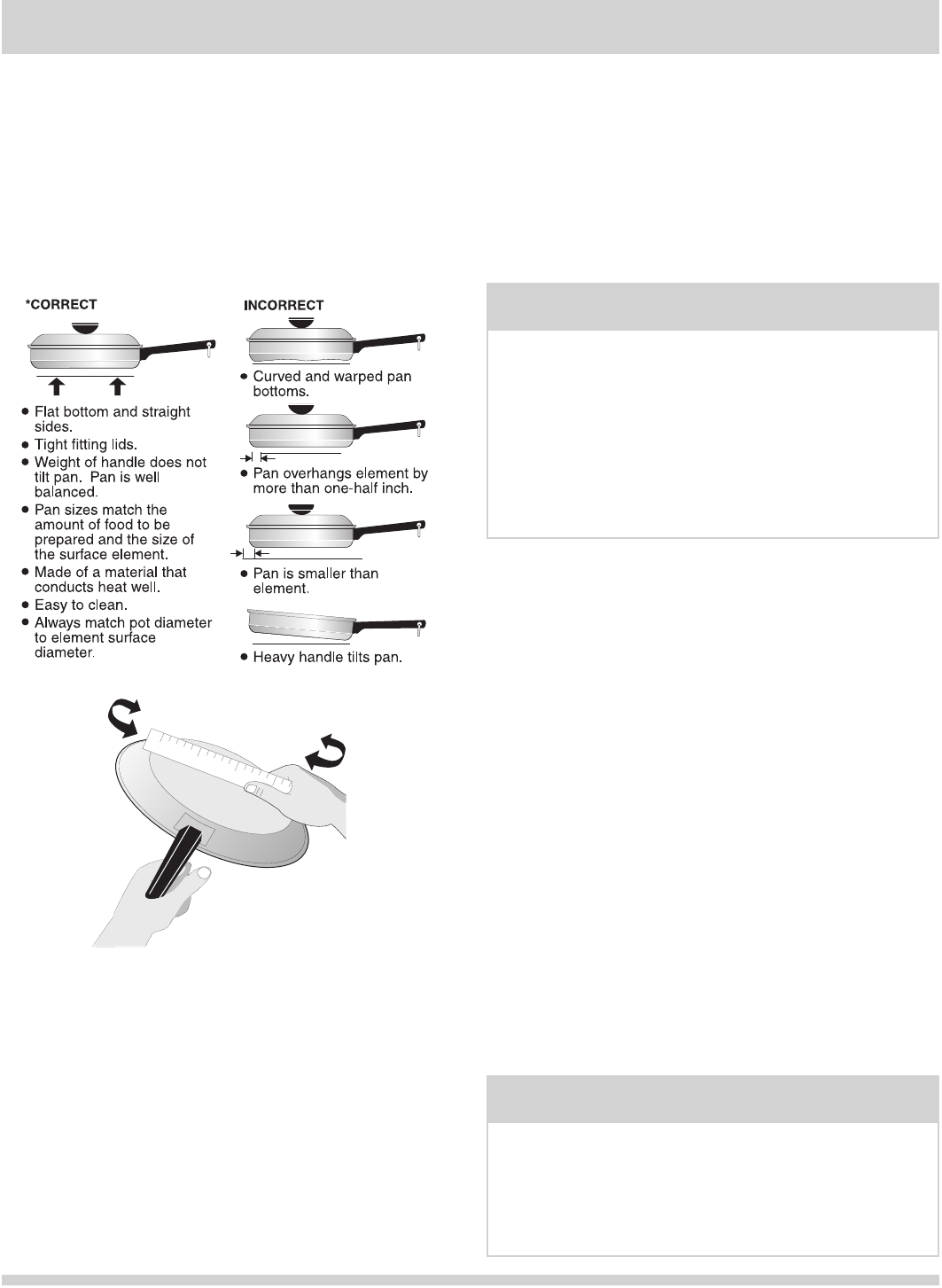
8
NOTE
Due to the high intensity of heat generated by the
surface elements, the glass surface will turn light green
when the element will be turned off. This phenomenon
is normal and the glass will come back to its original
white color after it has completely cooled down. (White
glass cooktops only).
Using proper cookware
The size and type of cookware used will inuence the
setting needed for best cooking results. Be sure to follow
the recommendations for using proper cookware as
illustrated in Figures 1 & 2.
Cookware should have at bottoms that make good
contact with the entire surface heating element (Figure
1). Check for atness by rotating a ruler across the
bottom of the cookware (Figure 2).
Figure 2
Figure 1
Cookware material types
The cookware material determines how evenly and quickly
heat is transferred from the surface element to the pan
bottom. The most popular materials available are:
Aluminum- Excellent heat conductor. Some types
of food will cause it to darken (Anodized aluminum
cookware resists staining & pitting). If aluminum pans
slide across the ceramic glass cooktop, they may leave
metal marks which will resemble scratches. Remove
these marks immediately.
Copper- Excellent heat conductor but discolors easily. May
leave metal marks on ceramic glass (see Aluminum above).
Stainless steel- Slow heat conductor with uneven cooking
results. Is durable, easy to clean and resists staining.
Cast iron- A poor heat conductor however will retain
heat very well. Cooks evenly once cooking temperature is
reached. Not recommended for use on ceramic cooktops.
Porcelain-enamel on metal- Heating characteristics will
vary depending on base material. Porcelain-enamel coating
must be smooth to avoid scratching ceramic cooktops.
Glass- Slow heat conductor. Not recommended for
ceramic cooktop surfaces because it may scratch the glass.
NOTE
Radiant elements have a limiter that allows the element
to cycle ON and OFF, even at the HI setting. This
helps to prevent damage to the ceramic smooth top.
Cycling at the HI setting is normal and can occur if the
cookware is too small for the radiant element or if the
cookware bottom is not at.
Be sure to read detailed instructions for ceramic glass
cooktop cleaning in the General Care & Cleaning
section and checklist section of this
Use and Care Guide.
About the ceramic glass cooktop
The ceramic cooktop has radiant surface elements
located below the surface of the glass. The design of the
ceramic cooktop outlines the area of the surface element
underneath. to match the pan size with the
diameter of the element outline on the cooktop and only
at-bottom cookware should be used.
The type and size of cookware, the number of surface
elements in use and their settings, are all factors that
will affect the amount of heat that will spread to areas
beyond the surface elements. The areas surrounding the
elements may become hot enough to cause burns.
About the radiant surface elements
The element temperature rises gradually and evenly.
As the temperature rises, the element will glow red. To
maintain the selected setting the element will cycle on and
off. The heating element retains enough heat to provide a
uniform and consistent heat during the off cycle.
For efcient cooking, turn off the element several minutes
before cooking is complete. This will allow residual heat
to complete the cooking process.




